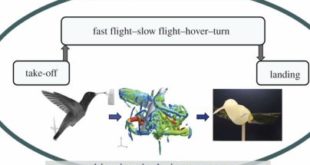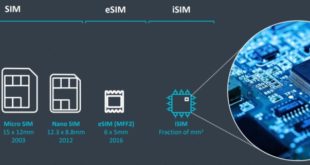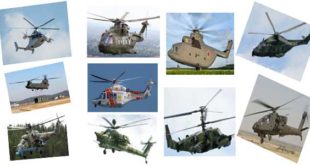Militaries are now employing Micro, Mini & Nano UAVs into their operations. They provide situational awareness to a small group of soldiers by flying several stories above them for 10-20 minutes at a time before placed back into a pocket to recharge. These will be used to carry out tasks …
Read More »Advances in AI Assistants enabling US army to develop cognitive agents helping Soldiers Deal with Information Overload
Virtual assistants are the cutting edge of end user interaction, thanks to endless set of capabilities across multiple services. Today, we can ask virtual assistants like Amazon Alexa, Apple’s Siri, Google Now to perform simple tasks like, “What’s the weather”, “Remind me to take pills in the morning”, etc. in …
Read More »Portable atomic clock technologies including chip-scale optical frequency synthesizer to enable ultra accurate GPS
Optical atomic clocks are at the pinnacle of time measuring devices, losing less than one second every ten billion years. Currently though, they are massive devices, weighing hundreds of kilograms. In order to have an optimal practical function that could be utilised by your average person, their size needs to …
Read More »Verification of Quantum computers is significant challenge on the road to scalable quantum computing technology.
Quantum chips perform computations using quantum bits, called “qubits,” that can represent the two states corresponding to classic binary bits — a 0 or 1 — or a “quantum superposition” of both states simultaneously. The unique superposition state can enable quantum computers to solve problems that are practically impossible for …
Read More »Plant Nanobionics or ePlants aim to turn plants into sensors detecting explosives, warn of pollutants and environmental conditions such as drought
Plant Nanobionics seeks to use designed nanoparticles to interface directly with plant cells and organelles to augment plant functions, as well as to introduce non-native functionalities. The broader vision is to create a wide array of wild-type plants, capable of imaging objects in their environment, self powering themselves as light …
Read More »Dedicated Hardware for Quantum Machine Learning to usher new era in AI by exponential speedup of applications
Quantum computing and quantum information processing is expected to have immense impact by performing tasks too hard for even the most powerful conventional supercomputer and have a host of specific applications, from code-breaking and cyber security to medical diagnostics, big data analysis and logistics. One of the areas where …
Read More »Embedded eSIM and iSIM are breakthrough IoT connectivity technologies for authenticating subscribers and devices on mobile networks
Strong IoT device authentication is required to ensure connected devices on the IoT can be trusted to be what they purport to be. Consequently, each IoT device needs a unique identity that can be authenticated when the device attempts to connect to a gateway or central server. With this unique …
Read More »Particle Robots and hybrid bio-inspired robotics are enabling shapeshifting space robots and autonomous robots for warfare
Recently scinetists are considering not only individual robots but developing of groups of robots, because a swarm of collaborative robots, each one observing the problem from a different point of view, is able to solve more difficult tasks than one robot by itself. The strength of a swarm can be …
Read More »Military Helicopters demand advanced engines with improved fuel consumption, power, durability and cost for conducting a wide range of military missions and operations.
A helicopter, or chopper, is a type of rotorcraft in which lift and thrust are supplied by rotors. This allows the helicopter to take off and land vertically, to hover, and to fly forward, backward, and laterally. These attributes allow helicopters to be used in congested or isolated areas where …
Read More »US DOD adapts commercial 4G LTE Advanced technology for mission command data, imagery and streaming video to battlefield
As the capabilities of commercial wireless systems and technology is advancing exponentially, the technology gap between them and the military tactical communications systems is widening. Huge product-oriented investments and standardization efforts by the commercial telecommunications industry has enabled 4G wireless along with the global standard, Long Term Evolution (LTE) to achieve peak data rate capabilities approximately ten times …
Read More » International Defense Security & Technology Your trusted Source for News, Research and Analysis
International Defense Security & Technology Your trusted Source for News, Research and Analysis









